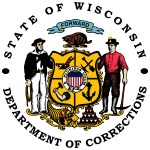Fox Hall (Fitchburg, Wisconsin)

Fox Hall is a historic house at 5183 County Highway M in Fitchburg, Wisconsin. The stone farmhouse was built circa 1856 by the Fox family, who settled in Fitchburg in 1843 and had previously lived in a log cabin. The house's design includes elements of the Greek Revival and Italianate styles, representing the transitional period between the popularity of the two styles. The house has a symmetrical layout with a front and back porch, sash windows with stone lintels, bracketed eaves, and a gable roof with two stone chimneys. The interior is original and has extensive ornamental woodwork, including a carved walnut banister on the main staircase.The house was added to the National Register of Historic Places on December 1, 1983.
Excerpt from the Wikipedia article Fox Hall (Fitchburg, Wisconsin) (License: CC BY-SA 3.0, Authors, Images).Fox Hall (Fitchburg, Wisconsin)
County Highway M,
Geographical coordinates (GPS) Address Nearby Places Show on map
Geographical coordinates (GPS)
| Latitude | Longitude |
|---|---|
| N 42.949166666667 ° | E -89.400277777778 ° |
Address
Fox Hall
County Highway M 5183
53575
Wisconsin, United States
Open on Google Maps







